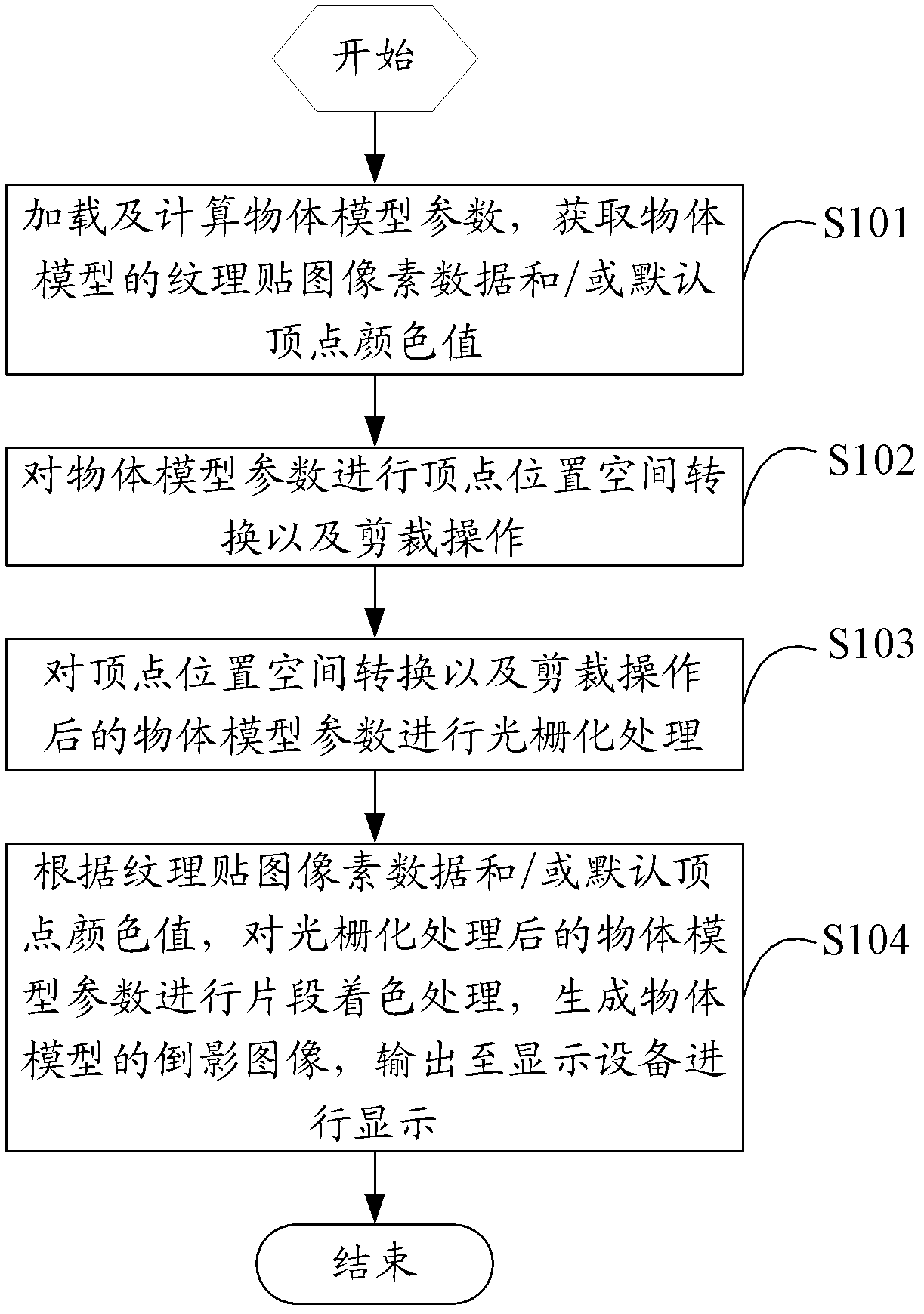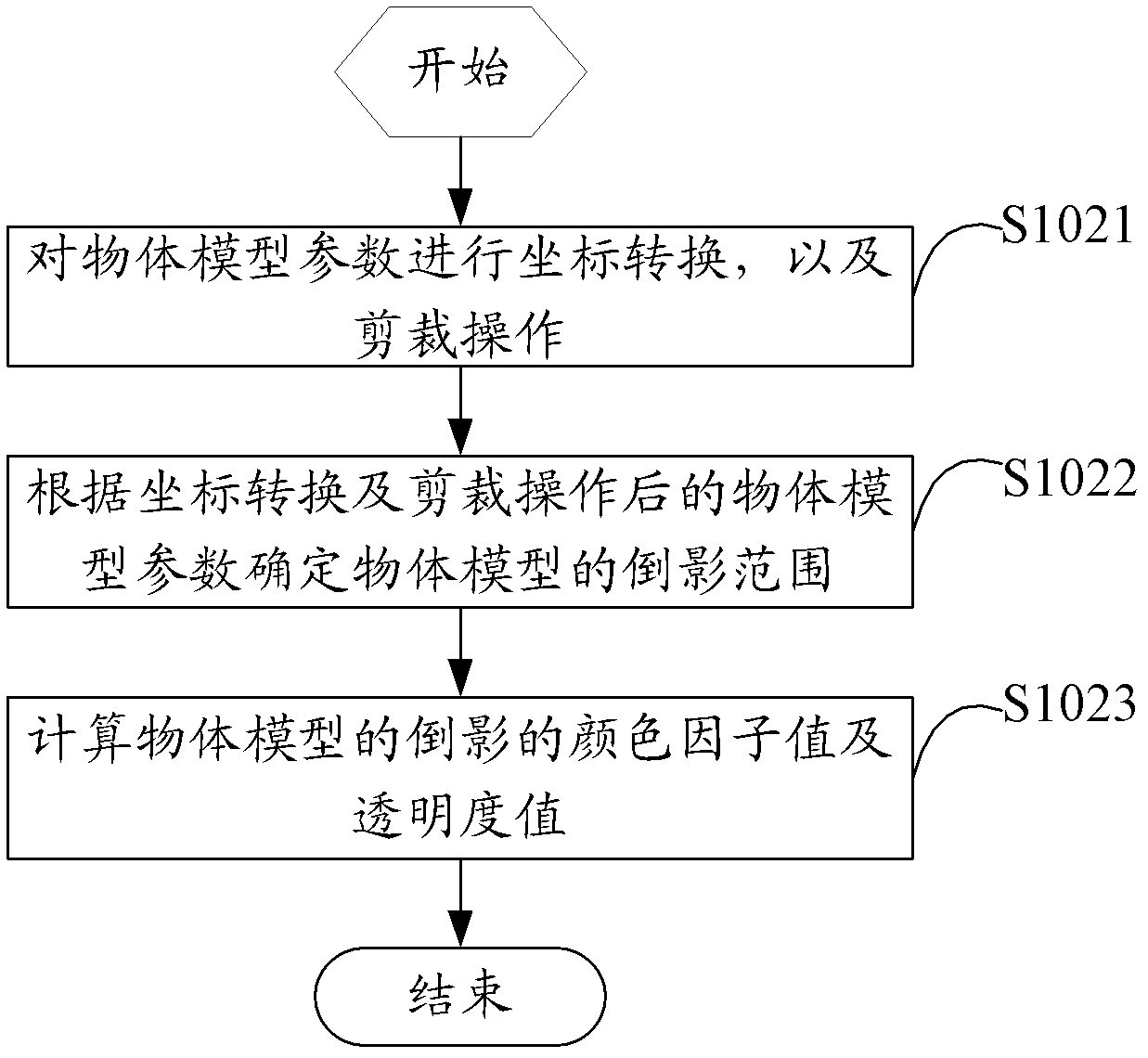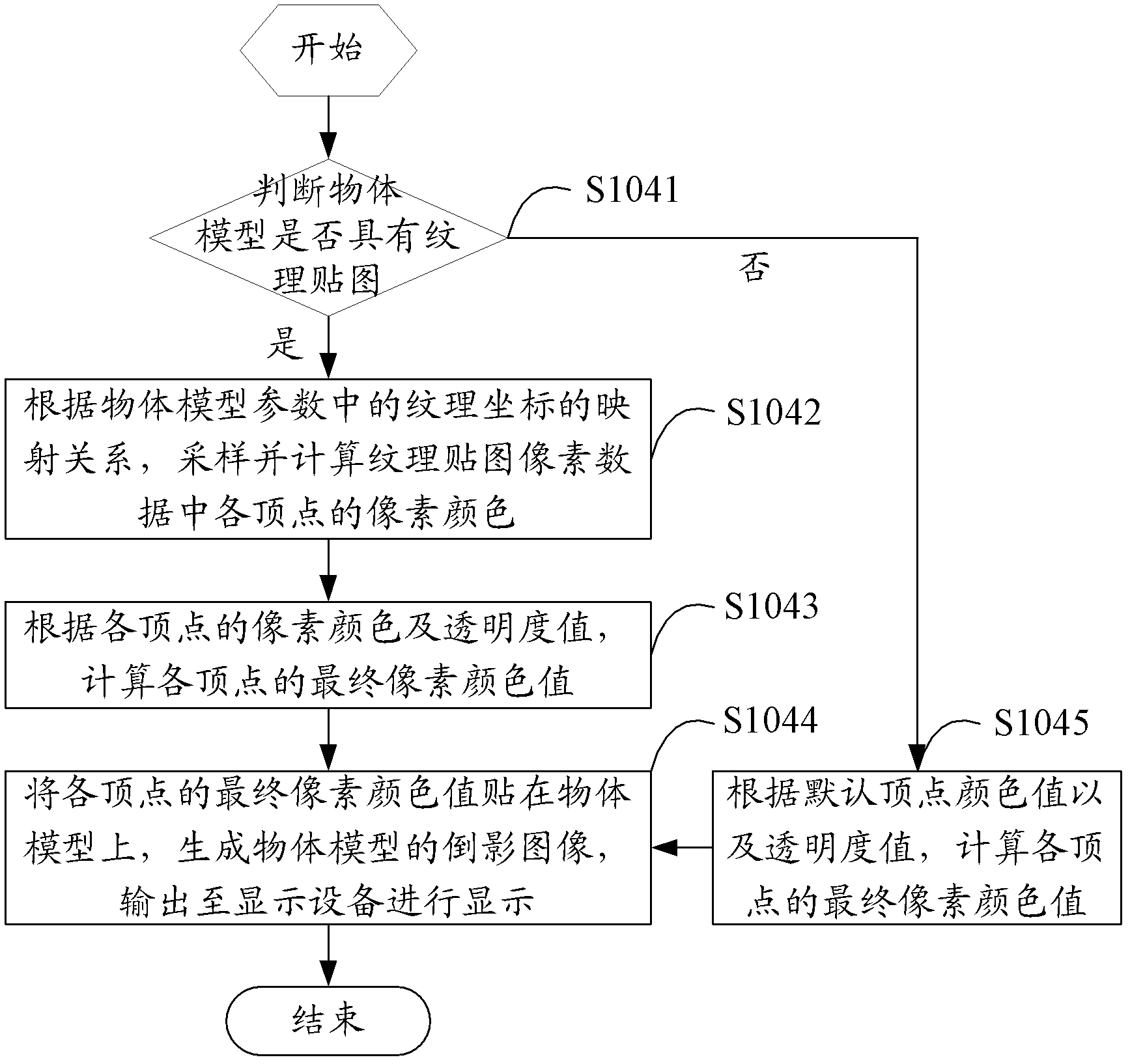OpenGL (open graphics library)-based inverted image display processing device and method
A reflection and display device technology, applied in image data processing, 3D image processing, instruments, etc., can solve the problems of inflexible production process, heavy artist workload, difficult to handle non-planar object models, etc., and achieve the change of fixed assembly line operation mode, good picture effect and fluency, high efficiency, flexibility and adaptability
- Summary
- Abstract
- Description
- Claims
- Application Information
AI Technical Summary
Problems solved by technology
Method used
Image
Examples
Embodiment Construction
[0050]The solution of the embodiment of the present invention is mainly: by loading and calculating the object model parameters by the CPU, obtaining the texture map pixel data and / or the default vertex color value of the object model; and then performing the vertex position space conversion and clipping operation on the object model parameters by the GPU in turn , rasterization processing and fragment coloring processing, generate a reflection image of the object model, and output it to a display device for display. The reflection effect of the object model is realized through parameter control, and the simulated reality is more realistic. The hazy gradient fade does not depend on the original texture image of the object model, nor does it depend on the format of the original texture image, the number of color channels, and the length of color bytes to save storage. Space, and reduce the amount of CPU operations and memory usage.
[0051] The invention is realized through Ope...
PUM
 Login to View More
Login to View More Abstract
Description
Claims
Application Information
 Login to View More
Login to View More - R&D
- Intellectual Property
- Life Sciences
- Materials
- Tech Scout
- Unparalleled Data Quality
- Higher Quality Content
- 60% Fewer Hallucinations
Browse by: Latest US Patents, China's latest patents, Technical Efficacy Thesaurus, Application Domain, Technology Topic, Popular Technical Reports.
© 2025 PatSnap. All rights reserved.Legal|Privacy policy|Modern Slavery Act Transparency Statement|Sitemap|About US| Contact US: help@patsnap.com



